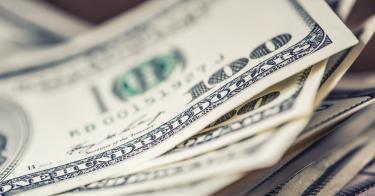In the past several weeks some economic analysts have raised concerns that the U.S. economy is “overheating.” Even many on Wall Street are worried inflation may be approaching, largely because unemployment is so low and wages are ticking up. The fear that rapid growth will drive inflation isn’t new, but history shows that the connection is tenuous and that booming economies lower rather than increase prices.
The two of us are inflation hawks who want dollar and price stability. But worries about growth-driven inflation have often been misplaced, as when they last surfaced in the 1980s. Many economists predicted President Reagan’s tax cuts would cause inflation, when in fact the Reagan years saw one of the biggest disinflations in American history.
President Trump is implementing a Reaganesque supply-side growth strategy, and the current boom looks likely to continue along similar lines. Gross domestic product increased nearly 3% over the past four quarters—a higher rate than President Obama achieved in any of his eight years. There is no sign that this growth rate is too much for the economy to handle; rather, it is a return to the high growth rates that the U.S. sustained during many low-inflation periods of the 20th century.
Employment and wages are also increasing at rates similar to America’s recent boom periods. The February jobs report showed a 313,000 spurt in nonfarm payrolls, an 806,000 increase in the civilian labor force, and—finally—a big jump in the labor-force participation rate. Middle-income workers have received their first significant raise in 17 years, bringing their wages closer to the rates they would have seen in the growth trend of the late 20th century had continued through the early 2000s. And yet for many these results have been overshadowed by fear that inflation must be looming.
Where did the enduring myth that growth causes inflation come from? In a 1958 paper, New Zealand economist A.W. Phillips posited a relationship between unemployment and wages, now called the Phillips Curve. He was right that wages tend to rise as unemployment falls. But it wasn’t until the 1960s that economists Paul Samuelson and Robert Solow wrongly extended this theory by suggesting a linkage between unemployment and general inflation. That theory doesn’t comport with the facts, then or now.
The great John F. Kennedy tax-cut boom in the 1960s coincided with low inflation and a strong dollar. In the 1970s, as the dollar collapsed when President Nixon took the greenback off the Bretton Woods gold standard, unemployment and inflation rose simultaneously. In the Reagan tax-cut boom, which lasted through the 1990s, unemployment and inflation fell together as the dollar stabilized under treasury secretaries Donald Regan, James Baker and Robert Rubin.
More than 60 years ago, Milton Friedman taught that inflation is always and everywhere a monetary phenomenon. It isn’t economic growth and hiring booms that cause inflationary and asset bubbles, but rather excess money creation by the Fed.
Another mistaken belief is that the main impact of the Trump tax cuts is to pump up consumer demand, financed through higher budget deficits. But unlike stimulus spending, tax cuts don’t distort the economy with artificial demand.
Except for some of the child credits and a few fattened deductions, the $1.5 trillion cut we helped design for Mr. Trump nearly two years ago was almost completely geared to reducing taxes on small and large businesses to boost incentives to invest and produce. Lower rates encourage businesses to invest and hire more. Capital investment, which was flat in 2015-16, has in the past year surged to 6.5% growth while inflation has remained level. And by the way, the Chicken Littles running around warning of inflation are many of the same economic geniuses who claimed a year ago that Mr. Trump would crash the economy.
In short, Mr. Trump’s tax-cutting and deregulatory policies are already pushing out the supply curve, creating real growth that isn’t inflationary. This is the critical point that so many economists miss: When production rises, prices fall. As Arthur Laffer often mentions, a bumper crop of apples means lower apple prices. Think of the Trump tax cut as more money chasing many more goods.
For workers this is the best of all worlds: A surge in capital investment, higher corporate productivity and profits, and a tight labor market. If this is “overheating,” we want much more of it—and we think the record 155 million Americans in the workforce would agree with us.
This piece originally appeared in the Wall Street Journal on 3/12/18




